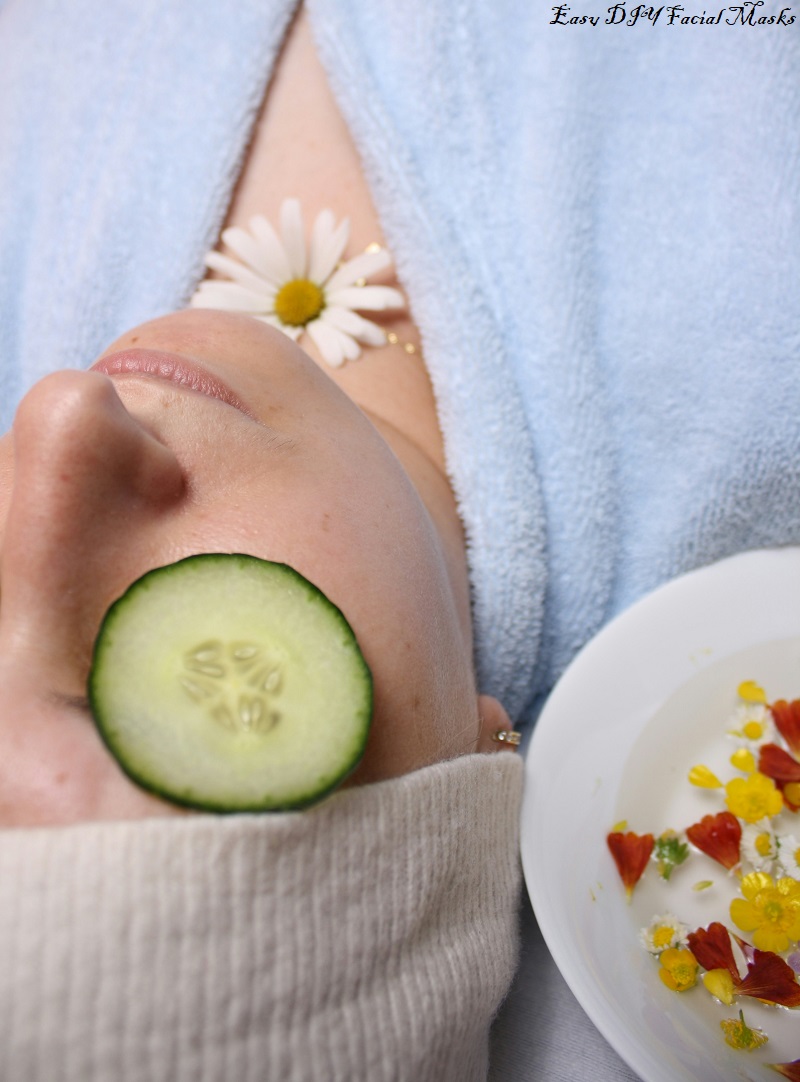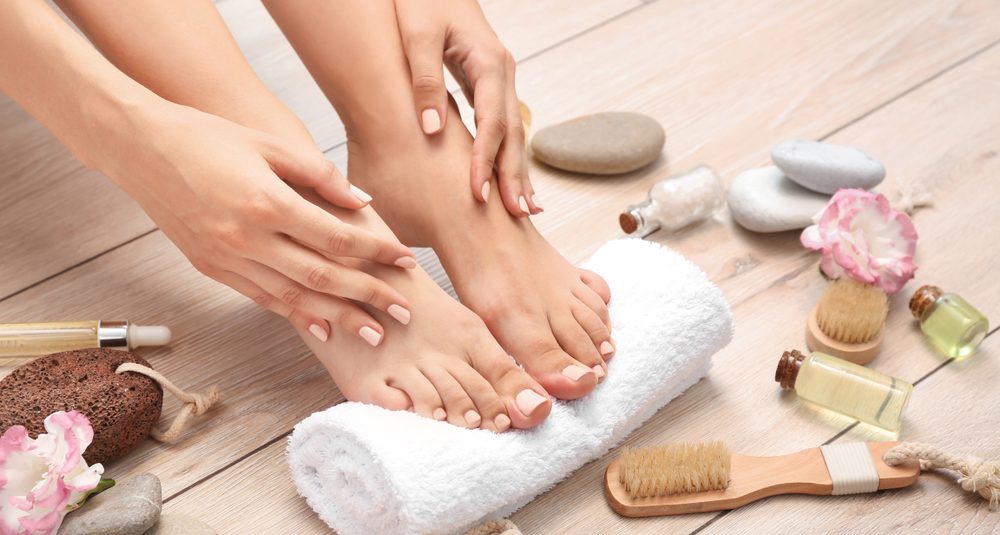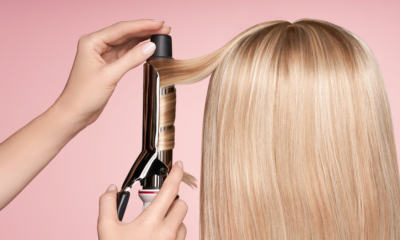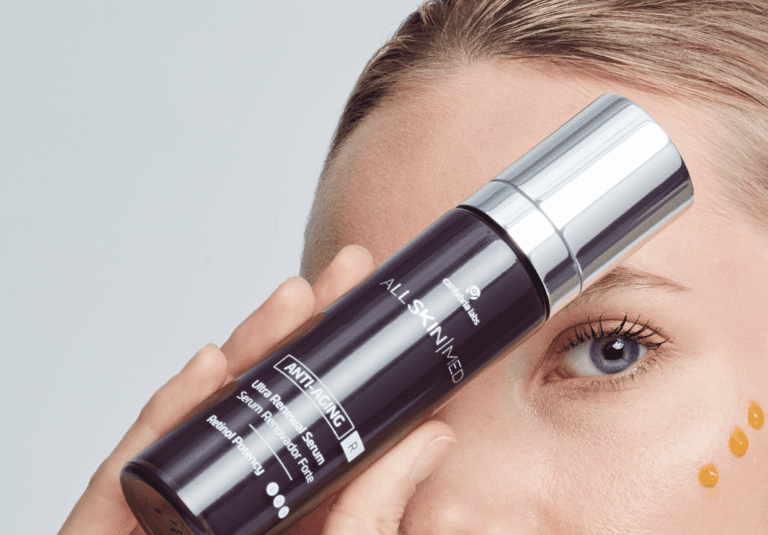Skin
Quick and Easy DIY Facial Masks

Maintaining healthy, radiant skin requires regular skincare, and using a face mask is one of the finest ways to treat yourself. But when you can make your own, why spend money on pricey store-bought goods? Using natural products that you most likely already have in your home, DIY facial masks are a quick and simple way to meet your skin’s demands.
What Makes a Good Facial Mask?
The components are the key to a successful face mask. Nutrient-dense natural ingredients like honey, yogurt, avocado, and clay help moisturize, cleanse, and brighten your skin. You may make masks that are suited to your skin type and issues by mixing the appropriate ingredients.
Benefits of DIY Facial Masks
Why choose homemade face masks? You have complete control over what appears on your face, and they’re convenient and reasonably priced. Additionally, they don’t include artificial chemicals or preservatives that can irritate delicate skin. Whether you have dry, oily, or acne-prone skin, there is a do-it-yourself remedy for you.
Quick Tips Before You Start
Always conduct a patch test on a small section of your skin prior to using any mask to make sure you won’t experience an adverse response. To enable the chemicals to fully penetrate your skin, thoroughly cleanse it.
DIY Facial Masks for Dry Skin
Honey and Avocado Mask
For dry skin, this moisturizing mask is a godsend. Avocado is full of fatty acids that soften and nourish the skin, while honey is a natural humectant, which means it attracts moisture to the skin.
The recipe is as follows: Mash half an avocado and stir in 1 tablespoon honey. After applying it to your face, wait 15 to 20 minutes. Use lukewarm water to rinse.
Oatmeal and Yogurt Mask
Yogurt contains lactic acid, which gently exfoliates and leaves your skin feeling soft and supple, while oatmeal calms inflamed skin.
To make it: combine two tablespoons of plain yogurt and two tablespoons of oatmeal. After applying evenly to your face, rinse it off after 15 minutes.
DIY Facial Masks for Oily Skin
Clay and Apple Cider Vinegar Mask
Apple cider vinegar balances the pH of the skin, while clay is great at absorbing excess oil.
How to prepare it: Mix one tablespoon of apple cider vinegar with two tablespoons of bentonite or kaolin clay. After applying, rinse off after ten to fifteen minutes.
Egg White and Lemon Mask
Lemon juice regulates the production of oil, while egg whites tighten the skin and minimize the appearance of pores.
Method: Beat one egg white with a few drops of lemon juice. After ten to fifteen minutes, wash the product off your face.
DIY Facial Masks for Acne-Prone Skin
Tea Tree Oil and Aloe Vera Mask
This mask is ideal for acne-prone skin because tea tree oil has strong antibacterial properties and aloe vera reduces irritation.
To prepare it: combine two tablespoons of aloe vera gel with a few drops of tea tree oil. Before washing, apply to the afflicted regions and let them sit for fifteen minutes.
Turmeric and Honey Mask
Turmeric reduces inflammation, and honey combats bacteria. When combined, they brighten the skin and lessen acne.
To prepare it: combine one tablespoon of honey with half a teaspoon of turmeric. After applying, rinse after ten to fifteen minutes.
DIY Facial Masks for Sensitive Skin
Cucumber and Aloe Vera Mask
Aloe vera soothes inflamed skin, and cucumber cools and moisturizes.
To create it: blend two teaspoons of aloe vera gel with half a cucumber. After 15 minutes, apply and rinse off.
Chamomile and Oats Mask
Oats gently exfoliate sensitive skin without irritating it, while chamomile has anti-inflammatory qualities.
How to prepare it: Make a cup of chamomile tea, then combine one tablespoon of ground oats with two tablespoons of the tea. Rinse after ten minutes after application.
DIY Brightening Facial Masks
Papaya and Honey Mask
Honey adds hydration, and papaya’s abundance of enzymes exfoliates and brightens the skin.
To make it: mash a papaya slice and stir in a tablespoon of honey. Rinse off after 10 to 15 minutes of application.
Banana and Turmeric Mask
Turmeric evens out skin tone and minimizes discoloration, while bananas moisturize and nourish.
The recipe is as follows: Mash a banana and stir in half a teaspoon of turmeric. Rinse after applying and wait 15 minutes.

DIY Anti-Aging Facial Masks
Egg White and Honey Mask
Honey adds hydration and egg whites tighten the skin, making this a powerful anti-aging combination.
To make it: whisk together one egg white and one tablespoon of honey. Before washing, apply to your face and let it sit for 15 to 20 minutes.
Green Tea and Yogurt Mask
Yogurt’s lactic acid exfoliates and smoothes fine wrinkles, and green tea’s abundance of antioxidants combats free radicals.
How to make it: Mix two teaspoons of green tea with one spoonful of yogurt after brewing a cup of it and allowing it to cool. Rinse off after 15 minutes of application.
How Often Should You Use DIY Facial Masks?
Depending on your skin type, use these masks one to three times each week for optimal effects. Dry and sensitive skin should only be used once or twice a week, although oily and acne-prone skin may benefit from more frequent use.
Do’s and Don’ts of Using DIY Facial Masks
. Patch-testing new ingredients is a must.
. Avoid using masks for longer than is advised.
. Make sure you utilize fresh ingredients.
. Avoid placing masks too near the eyes.
Storage Tips for DIY Masks
Aloe vera gel and premade masks can be kept in the refrigerator for up to a week, but the majority of DIY masks should be used fresh. Use a clean container at all times.
Conclusion
Making your DIY face masks is a great method to treat your skin without going over budget. You may treat a variety of skin issues in a customized, chemical-free manner by adding these natural, simple-to-make masks to your routine. Keep in mind that the secret to long-lasting success is persistence.
FAQs
- How long do DIY facial masks last?
While some can be kept in the refrigerator for up to a week, the majority should be consumed right away. - Can I mix ingredients for different skin benefits?
Indeed, you may customize your masks by mixing substances that work best for your skin type. - What’s the best mask for glowing skin?
A papaya and honey mask works wonders for skin that is radiant and vibrant. - Are DIY masks safe for all skin types?
In general, yes, however, if you have sensitive skin, always do a patch test. - Can I use these masks daily?
To prevent over-exfoliating or irritating your skin, it is best to apply them one to three times per week.
Skin
Superior Manicure And Pedicure Near Me

Manicure and pedicure transcend mere aesthetic indulgence—they embody self-nurturing rituals. Whether preparing for a grand event or reveling in restorative moments, locating a stellar salon nearby can amplify the experience. Why endure long commutes when impeccable nail care awaits just around the corner?
Advantages of Regular Nail Care
Enhanced Nail Vitality

Routine manicures and pedicures fortify nail health, curbing vulnerabilities like brittleness and fungal maladies. Skilled technicians meticulously trim, buff, and nourish your nails, ensuring enduring strength and vitality.
Serenity and Stress Dissolution
In a world of chaos, these treatments offer an oasis of tranquility. The gentle massages, soothing warm soaks, and serene atmosphere dissolve tension, rejuvenating both mind and spirit.
Polished Elegance
Well-groomed nails exude confidence. Whether you favor vibrant hues or understated neutrals, a freshly manicured set effortlessly enhances your overall appearance.
How to Unearth the Finest Manicure and Pedicure Near You
Leverage Digital Reviews
Platforms like Google, Yelp, and Facebook brim with insights. Prioritize feedback highlighting cleanliness, service excellence, and client satisfaction.
Rely on Personal Recommendations
Trustworthy endorsements from friends, family, or colleagues often eclipse anonymous reviews, steering you toward hidden gems.
Assess Hygiene Protocols
Tool Sterilization Practices
Opt for salons employing autoclaves or single-use tools to mitigate infection risks.
Impeccable Cleanliness
A spotless environment—be it floors, chairs, or workstations—reflects professionalism and meticulous care.
Seek Certified Technicians
Entrust your nails to seasoned, licensed professionals for a secure and exceptional experience.
Varieties of Manicures and Pedicures

Classic
This evergreen choice encompasses fundamental nail care, cuticle grooming, and a polish application of your liking.
Gel
Revered for durability, gel treatments resist chipping and retain their luster longer.
Spa Treatments
Elevate your session with exfoliation, nourishing masks, and warm towel wraps for ultimate relaxation.
French Tips
Timelessly sophisticated, this style complements any occasion with subtle elegance.
What to Anticipate During Your Appointment
Personalized Consultation
Communicate your preferences and concerns openly. A skilled technician will adapt the service to align with your unique needs.
Step-by-Step Process
From soothing soaks to the final polish, every stage is curated to leave you invigorated.
Optional Add-Ons
Enhance your experience with extras like intricate nail art, paraffin treatments, or extended massages.
Essential Attributes of a Premium Nail Salon
Welcoming Ambiance
A serene setting with calming melodies and plush seating augments the experience.
Superior Products
High-caliber polishes and creams yield visibly superior outcomes.
Affable Personnel
Courteous, attentive staff foster a hospitable environment.
Trending Nail Care Styles
Minimalist Artistry
Delicate designs such as geometric motifs or single-line embellishments are in vogue.
Vivid Shades
Bold tones—from fiery scarlets to electrifying greens—dominate current trends.
Au Naturel
Many embrace the understated allure of bare, well-maintained nails for a fresh, clean look.
Tips for Prolonging Nail Health
Post-Treatment Guidelines
Steer clear of water exposure for several hours to secure your polish.
Moisturization Essentials
Regularly hydrate your nails and cuticles using nourishing oils and creams.
Choose Safer Polishes
Opt for non-toxic formulations devoid of harmful chemicals like formaldehyde.
Comparing Affordable and Luxury Nail Salons

Affordable Options
Budget-friendly salons deliver essential services without excessive embellishments.
Upscale Experiences
High-end salons boast premium products, meticulous service, and an opulent atmosphere.
Conclusion
Your nails merit the finest care, and discovering a nearby manicure and pedicure haven is simpler than imagined. Whether your priority is economical efficiency, lavish pampering, or a harmonious blend of both, remember that prioritizing self-care is always rewarding.
FAQs
- How frequently should I schedule nail treatments?
Every 2-4 weeks, depending on nail growth and personal habits. - Are gel treatments safe?
Yes, provided a professional administers and removes them correctly. - What’s the typical cost range?
Services generally range from $20 to $80, contingent on the salon and offerings. - How can I verify a salon’s hygiene standards?
Look for sterilized tools, pristine workstations, and an overall hygienic setup. - Are manicures and pedicures suitable for men?
Absolutely! Nail care transcends gender—it’s for everyone.
Skin
Why Does My Car Smell Like Nail Polish Remover?

Were you ever hopped into your car, only to be hit by a chemical smell like nail polish remover? This isn’t just unpleasant—it’s often a warning sign that something in your car needs attention. Unusual odors can signal mechanical or safety issues, and addressing them early can save you from costly repairs.
So, why does your car smell like a nail polish remover? Let’s explore the possibilities.
Common Causes of Chemical Odors in Cars

Cars can emit various smells, each hinting at specific issues. A nail-polish-remover-like smell, often associated with acetone, is commonly linked to:
- Fuel system leaks
- HVAC contamination
- Battery problems
- Overheating mechanical components
Ignoring these can lead to safety risks and expensive repairs.
Why Your Car Smells Like Nail Polish Remover
The Chemical Behind the Odor
Acetone, a volatile organic compound (VOC), causes the smell of nail polish remover. In cars, this smell usually indicates that something is producing or leaking similar VOCs.
Common Sources of the Smell
- Fuel System Leaks
- Gasoline contains acetone-like chemicals that evaporate quickly. A leak in the fuel tank or lines can release these fumes, creating a strong chemical odor.
- HVAC System Contamination
- Mold, refrigerants, or chemical residues in the air vents can emit an acetone-like smell.
- Faulty AC components may also leak refrigerants with a chemical odor.
- Overheating Car Battery
- Overheating or damaged batteries can release fumes resembling acetone. This requires immediate attention to prevent potential failure or explosion.
- Worn-out or Overheating Clutch (Manual Transmission)
- Excessive friction from a failing clutch can produce heat and chemical-like odors.
Diagnosing the Problem
Steps to Identify the Cause
- When does the smell occur?
- On ignition, acceleration, or with the AC running?
- Are there warning lights?
- Look for battery, engine, or other system indicators.
- Are there unusual sounds?
- Clicking, hissing, or grinding sounds can provide additional clues.
DIY Inspection Tips
- Under the Hood: Look for visible leaks or swelling in components.
- Fuel System: Sniff near the fuel cap for strong odors.
- Battery: Check for swelling or corrosion.
Risks of Ignoring the Smell

Ignoring the smell isn’t just inconvenient—it can be dangerous:
- Fuel leaks: Increase fire risks.
- Battery issues: Can lead to failures or explosions.
- HVAC contamination: This may expose you to harmful chemicals.
Addressing the issue promptly ensures your safety and prevents expensive repairs.
Fixing the Problem
Professional Repairs
- Fuel System: Fixing leaks can cost $200–$500.
- HVAC System: Cleaning or repairing vents starts at $150.
- Battery Replacement: A new battery typically costs $100–$300.
Preventative Maintenance
- Follow your car’s service schedule.
- Replace air filters regularly.
- Inspect the battery for wear and corrosion.
When to Seek Immediate Help
Seek immediate help if the smell is:
- Intense.
- Accompanied by smoke or warning lights.
- Persisting despite basic maintenance.
Preventing Future Odors
Regular Maintenance
- Schedule periodic inspections.
- Replace filters and worn components.
- Clean vents to avoid the buildup of contaminants.
Proper Cleaning Practices
- Avoid chemical spills inside the car.
- Clean vents and upholstery regularly to prevent residue.
Conclusion
A nail polish remover smell in your car isn’t just an annoyance—it’s a signal that something needs attention. Whether it’s a fuel leak, battery issue, or HVAC contamination, promptly diagnosing and fixing the problem can save you from more significant trouble. Take action to ensure your car is safe and running smoothly.
FAQs
Q: What should I do if my car smells like chemicals but seems fine?
A: Inspect the car or visit a mechanic to rule out hidden issues.
Q: How can I safely inspect my car for unusual smells?
A: Turn off the engine, wear gloves, and check for visible damage or leaks.
Q: Is the smell always dangerous?
A: Not always, but it’s often a sign of a problem that needs attention.
Q: Can the smell harm my health?
A: Yes, prolonged exposure to chemical fumes can be hazardous.
Q: What’s the average cost to fix a fuel system leak?
A: Repairs typically range from $200 to $500, depending on the extent of the damage.
Skin
How to Use Global Beauty Care Retinol Skin Cream
-

 Skin9 months ago
Skin9 months agoNatural Oil-Free Face Moisturizer Reviews & Buyers Guide
-

 Hair3 weeks ago
Hair3 weeks agoDoes a Flat Iron Kill Lice? Fact or Myth?
-

 Hair9 months ago
Hair9 months agoDoes a Flat Iron Kill Lice? Fact or Myth?
-

 Skin8 months ago
Skin8 months agoAbout Face Beauty: Tips for Enhancing Your Natural Beauty
-

 Hair9 months ago
Hair9 months agoFunction of Beauty: Personalized Hair Care for Your Unique Needs
-

 Skin8 months ago
Skin8 months agoBeautiful Nails: Tips and Tricks for Healthy and Gorgeous Nails
-

 Hair9 months ago
Hair9 months agoTitanium Flat Iron vs. Ceramic
-

 Hair9 months ago
Hair9 months agoHow to Curl Your Hair with a Flat Iron for Beginners




